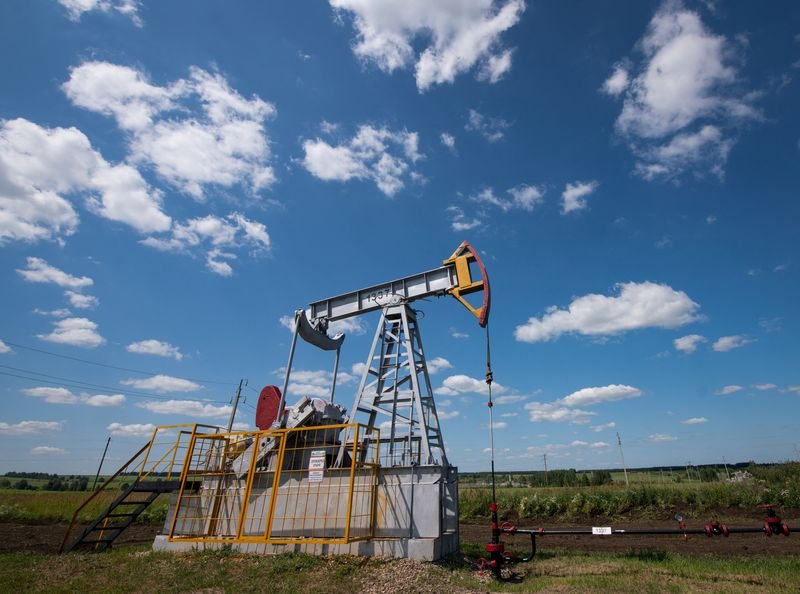Oil Prices Surge Amid Mideast Uncertainty and Supply Constraints
Recent developments have ignited concern about the stability of oil prices, primarily driven by tensions in the Middle East and significant supply restrictions. These factors combined are leading to a marked increase in oil values, stirring discussions among investors and analysts alike.
Middle East Tensions Impacting Oil Prices
The geopolitical landscape in the Middle East continues to play a crucial role in influencing global oil markets. As conflicts and political instability arise in key oil-producing nations, fears increase regarding potential disruptions in oil supply. This uncertainty often results in fluctuations in pricing on commodity markets. Investors closely monitor these developments, as any escalation can lead to an immediate response in oil prices.
Supply Constraints Affecting Market Dynamics
In addition to geopolitical conditions, supply constraints pose another significant factor contributing to the rise in oil prices. Various production challenges have emerged, impacting the total volume of oil available on the global market. Factors such as maintenance issues, natural disasters, and production limits enforced by major oil exporters add to the complexities of supply dynamics. These constraints reinforce the relationship between supply availability and pricing, furthering the upward trend observed in recent weeks.
Global Demand Influencing Oil Prices
While supply issues are crucial, global demand for oil also significantly influences pricing trends. As economies strengthen and industrial activity resumes post-pandemic, the demand for energy resources has surged. Countries are ramping up their consumption, driven by increased transportation needs, manufacturing, and energy generation. This rising demand, paired with supply limitations, creates an environment conducive to price hikes.
Market Reactions to Price Changes
Market reactions to oil price fluctuations are often swift and pronounced. Traders and investors in commodities markets adapt quickly to news and data indicating changes in oil prices. Reports of increasing geopolitical tensions or potential supply disruptions can lead to a spike in buying activity, further driving prices up. Conversely, any news signaling stabilization or an increase in supply could lead to decreased prices, showcasing the market’s volatility.
Forecasting Future Oil Prices
Predicting future oil prices remains a complex endeavor, influenced by numerous variables. Analysts often employ various forecasting methods to assess potential trends, including economic indicators, geopolitical developments, and climatic influences. As oil prices rise, market participants strive to understand potential scenarios that could impact future pricing, ranging from escalated conflicts to increased production capabilities among oil-producing nations.
The Role of OPEC in Oil Pricing
The Organization of the Petroleum Exporting Countries (OPEC) plays a pivotal role in regulating oil markets. Through their production quotas, OPEC countries can influence market supply and thus affect pricing. Whenever OPEC convenes to discuss production levels, analysts closely watch for hints about future pricing trends. Decisions made during these meetings can impact both short-term and long-term market dynamics, emphasizing the organization’s significance in the oil industry.
Investor Strategies in a Volatile Market
Given the current state of oil prices, investors are employing various strategies to navigate this volatility. Some are choosing to hedge their investments using options and futures contracts to protect against potential downturns. Others are focusing on stocks within the energy sector, particularly those companies that may benefit from rising oil prices. Strategic asset allocation considering the current market conditions often involves adjusting portfolios to mitigate risks associated with fluctuations in oil prices.
Conclusion: The Uncertain Landscape of Oil Pricing
As the situation in the Middle East remains precarious, coupled with supply constraints and rising global demand, the landscape of oil pricing continues to evolve. Stakeholders, from investors to policymakers, are attuned to the factors that influence market trends, recognizing the intertwined relationship between geopolitical tensions, supply and demand, and historical pricing patterns.
Staying informed and adaptable is essential in such a rapidly changing environment, allowing parties involved to make evidence-based decisions in the realm of energy investment and economic forecasting.
